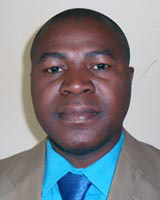Early diagnosis through newborn screening, prophylactic therapy, and comprehensive care programs including hydroxyurea therapy as well as bone marrow therapy, are current treatment options, in well-resourced countries. Bone marrow transplant offers a promising prospect for cure5; however, this line of treatment is limited because it carries significant risks, including infections, graft rejection and up to a 10% chance of mortality6. Moreover, human leucocyte antigen matching and other associated costs (pre-, peri- and post-treatment) are often outside the reach of many urban, let alone rural, families affected or afflicted by the disease.
Currently, several innovative approaches are at different stages of trials. These include:
- gene addition, whereby a new haemoglobin gene is inserted into the cells' DNA using a viral vector with the old, faulty haemoglobin gene still being present (the latter goes silent as the new gene takes over)
- gene editing, which corrects sickle cell genes with tools such as nucleases and others including zinc finger nuclease, transcription activator-like effector nuclease and clustered regularly interspaced short palindromic repeats1
- disabling of the BCL11A gene, which causes the switch from foetal to adult haemoglobin, so that patients can continue to produce foetal haemoglobin instead of the mutated adult variant7.
Although some challenges remain, including how to minimise off-target or unwanted injurious effects and ensuring that the edited/new stem cells survive and generate healthy red blood cells after they are reinserted into the bone marrow, considerable improvements have been made8.
These new approaches can potentially alter the public health impacts, clinical effects and financial difficulties associated with SCD and similar haemoglobinopathies in rural parts of Africa, the Middle East and worldwide. It is hoped that through this publication and similar platforms, a wider dissemination of these ongoing research projects will improve the policy salience and institutional research support that will facilitate these approaches. This will increase the prospect of enduring relief for families, especially in rural areas, where financial, social and physical conditions are daily crippled by the debilitating effects of SCD.
Anthony O. Umunna, Department of Development Studies, University of South Africa, Pretoria, South Africa
1 Gene therapy: editorial control. Nature 2014; 515: S11-S13. https://doi.org/10.1038/515S11a
2 Global epidemiology of haemoglobin disorders and derived service indicators. Bulletin of the World Health Organization 2008; 86: 480-487. https://doi.org/10.2471/BLT.06.036673
3 The financial burden of sickle cell disease on households in Ekiti, Southwest Nigeria. ClinicoEconomics & Outcomes Research 2015; 7: 545-553. https://doi.org/10.2147/CEOR.S86599
4 Rural population growth (annual %) in sub-Saharan Africa. Available: http://www.tradingeconomics.com/sub-saharan-africa/rural-population-growth-annual-percent-wb-data.html (Accessed 2 December 2016).
5 Sickle cell disease among children in Africa: an integrative literature review and global recommendations. International Journal of Africa Nursing Sciences 2015; 3: 56-64.
6 Bone marrow transplant for hemoglobinopathies: past, present and future. Baillieres Clinical Haematology 1993; 6: 299-325.
7 Genetic treatment of a molecular disorder: gene therapy approaches to sickle cell disease. Blood 2016; 127(7): 839-848. https://doi.org/10.1182/blood-2015-09-618587
8 Gene therapy in a patient with sickle cell disease. New England Journal of Medicine 2017; 376: 848-855. https://doi.org/10.1056/NEJMoa1609677

